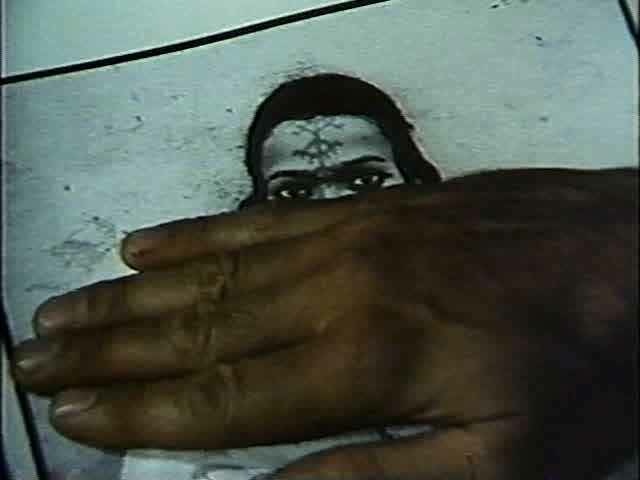Harun Farocki

Still image from the film “Images of the World and the Inscription of War” 1989
Bilder der Welt und Inschrift des Krieges – Farocki (1989)
Notes on “Images of the World and the Inscription of War”
Easily the most accomplished current essayist, and possibly the best unheralded contemporary filmmaker, is Czechoslovakia-born, Germany-based Harun Farocki. Imagine a tryst between Andy Warhol and a Marxist Frederick Wiseman. – Paul Arthur, Film Comment
This beguiling meditation on vision, power and Aufklärung (the German word for both ‘enlightenment’ and ‘aerial surveillance’) centers on historical accident…Farocki zigzags like a dialectician free-associating off this event. The cumulative effect is both arabesque and critical, a metahistory of the eye. – Village Voice
Harun Farocki’s Images of the World and the Inscription of War is unquestionably one of the most influential, quoted and urgent essay films of the past twenty years. By turns curious and furious, the film examines aerial photographs of Auschwitz taken by American bombers searching for targets like munitions factories and chemical plants used to fuel the Nazi war efforts. Somehow the long, sinewy lines of people huddled before gas chambers went unseen. Rather, they were not what the CIA was looking for and were therefore left unexamined and unidentified. The photographs were promptly filed away, only to be unearthed thirty years later. Probing these documents and juxtaposing them with photographs taken by the Nazis, as well as images illustrated by Alfred Kantor, a camp prisoner, Farocki weaves together a sharp, provocative, and multi-layered refutation of photographic reality, using many other tangents that build upon his argument in ways unconventional and intuitive. – Cinematheque Ontario
The title Images of the World and the Inscription of War suggests not only a mediation of the world by images, but also an embeddedness of war in this mediation, and “inscription” implies that both require decoding. Immediately, then, Farocki announces his primary theme–the imbrication of instruments of representation and destruction–which the seventy-five-minute film proceeds to examine through specific examples that, as they are repeated, take on the hermeneutic form of allegorical objects–objects that we must first decipher and then use in further deciphering. – Hal Foster, Artforum

Still Images of “Immersion“. Video duel-screen projections (2009)
Harun Farocki, Immersion, 2010 excerpt for class use
Notes on “Immersion”
Virtual Reality exposure of tramatic events for soilders suffering from Post-Tramatic Stress Disorder.
“A U.S. soldier from the Iraq war, coaxed on by a therapist and aided by virtual simulation, relives the experience of a reconnaissance mission in which a mistake he committed led to his partner’s death. The film, as does much of Farocki’s astoundingly relevant and astute catalogue of film and media installation work, investigates overlaps between military and industrial production – here, the use of technology pioneered in the video game/entertainment industry to treat post-traumatic stress disorder – and, most importantly, the role of the image in this negotiation.”